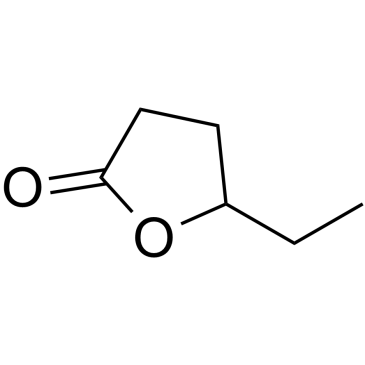γ-Caprolactone

γ-Caprolactone structure
|
Common Name | γ-Caprolactone | ||
|---|---|---|---|---|
| CAS Number | 695-06-7 | Molecular Weight | 114.142 | |
| Density | 1.0±0.1 g/cm3 | Boiling Point | 214.9±8.0 °C at 760 mmHg | |
| Molecular Formula | C6H10O2 | Melting Point | -18°C | |
| MSDS | Chinese USA | Flash Point | 98.3±0.0 °C | |
| Symbol |

GHS07 |
Signal Word | Warning | |
|
Predictive three-dimensional quantitative structure-activity relationship of cytochrome P450 1A2 inhibitors.
J. Med. Chem. 48 , 3808-15, (2005) The purpose of this study was to determine the cytochrome P450 1A2 (CYP1A2) inhibition potencies of structurally diverse compounds to create a comprehensive three-dimensional quantitative structure-activity relationship (3D-QSAR) model of CYP1A2 inhibitors an... |
|
|
Profile of volatile metabolites in human urine.
Clin. Chem. 17(7) , 592-4, (1971)
|
|
|
The influence of degradation characteristics of hyaluronic acid hydrogels on in vitro neocartilage formation by mesenchymal stem cells.
Biomaterials 30 , 4287-96, (2009) The potential of mesenchymal stem cells (MSCs) as a viable cell source for cartilage repair hinges on the development of engineered scaffolds that support adequate cartilage tissue formation. Evolving networks (hydrogels with mesh sizes that change over time ... |
|
|
Structure-reactivity studies of serum paraoxonase PON1 suggest that its native activity is lactonase.
Biochemistry 44(16) , 6371-82, (2005) PON1 is the best-studied member of a family of enzymes called serum paraoxonases, or PONs, identified in mammals (including humans) and other vertebrates as well as in invertebrates. PONs exhibit a range of important activities, including drug metabolism and ... |
|
|
Profiles of strongly polar and less polar acids obtained from human blood, plasma and serum by two-step ultrafiltration.
J. Chromatogr. A. 309(1) , 17-32, (1984) A two-step ultrafiltration method combined with anion-exchange chromatography is described for the separation of lipophilic and strongly lipophobic acids occurring in human blood, serum and plasma. After treatment with diazomethane, the acid fractions are sep... |
|
|
Catabolic pathway of gamma-caprolactone in the biocontrol agent Rhodococcus erythropolis.
J. Proteome Res. 11(1) , 206-16, (2012) Gamma-caprolactone (GCL) is well-known as a food flavor and has been recently described as a biostimulant molecule promoting the growth of bacteria with biocontrol activity against soft-rot pathogens. Among these biocontrol agents, Rhodococcus erythropolis, c... |
|
|
Gamma-caprolactone stimulates growth of quorum-quenching Rhodococcus populations in a large-scale hydroponic system for culturing Solanum tuberosum.
Res. Microbiol. 162(9) , 945-50, (2011) Bacteria degrading quorum sensing (QS) signals have been proposed as biocontrol agents able to quench QS-dependent expression of virulence symptoms caused by Pectobacterium on potato plants. We report here that gamma-caprolactone (GCL) treatment stimulated gr... |
|
|
Judith Michalski et al.
Perfum. Flavor. 39(2) , 48-49, (2014)
|